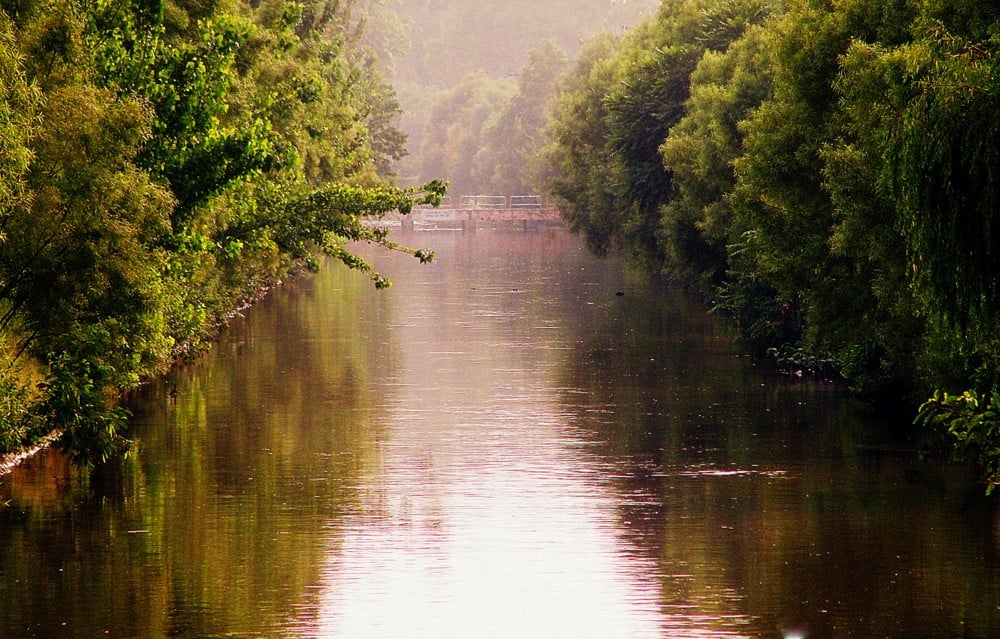
The debate on development versus environment grows in the wake of the Supreme Court's verdict

It would not be an exaggeration to dub today’s Lahore as the city of roads, overheads and underpasses. As the city braces for further projects of similar ilk, initiated by the Punjab government in the so-called interest of the public, the environmentalists and conservationists are worried about a grave loss of greenery. The debate intensified recently following the ruling party’s victory in the apex court regarding the felling of trees as part of the development projects.
As the story goes, a three-member bench of the Supreme Court (SC) of Pakistan allowed the Punjab government to widen the Canal Bank Road at certain points and cut trees that fall in the way. The go-ahead was also regarding the construction of a 1.3-kilometre long underpass at the Chaubucha Interchange, the addition of a lane in the sector between the Doctor’s Hospital and Thokar Niaz Beg, besides realignment of the Jail Road underpass.
The contempt of court petition, filed by the Lahore Bachao Tehreek (LBT), was also dismissed whereas the petition of the government was accepted wherein it had sought permission to fell trees and acquire greenbelts for Canal widening project.
The court responded to the government’s reassurances during the hearing that ten trees would be planted for every single tree that is felled in the process. "It is a matter of public knowledge that in the city of Lahore, a number of trees has been planted in different parts on account of which the environment has improved. Therefore, the cutting of trees would not be a hazard to the environment but to disallow such widening, in fact, is causing inconvenience to the public at large," the verdict said.
Noted painter and conservationist Ajaz Anwar laments the fact that the SC verdict should have allowed felling trees. "Sadly, the superior judiciary did not consider environmental issues in a friendly way. It wasn’t sympathetic to the pedestrians and the judges certainly haven’t taken a walk along the canal," he says.
"The government should have completed the Ring Road first so that those headed for other areas could have an immediate exit. The core problem is a lack of big transport and no master planning."
Anwar further says that new public transport projects like Metro and Orange Line are defacing the city landscape and damaging the environment. "We are losing fresh air and shade, gradually but surely.
"The government is planting ornamental saplings which look beautiful if you look at them while travelling in air conditioned cars but these are useless for the pedestrians, because these are artificial," he adds.
In the absence of an independent and authentic, numerical study of tree types in Lahore, one has to go by the official claims which state that a million trees are planted every year.
Environmental studies point out that densely populated cities such as Lahore should have at least 35 to 40 percent tree cover. However, this percentage has been decreasing for the past several years as housing societies and commercial structures were erected on agri-land in and around the city. This cover was less than 20 percent till a few years ago.
According to the United States Department of Agriculture (USDA) reports, one acre of forest absorbs six tons of carbon dioxide and gives off four tons of oxygen which is enough to meet 18 people’s need for one whole year.
Salman Rashid, a prominent travel writer based in Lahore, and a Fellow of Royal Geographical Society, calls the city a "green desert" by felling old, indigenous trees and replacing them with date palms, eucalyptus etc.
"Since my childhood, I’ve been witness to trees being butchered in the city," he says, recalling the days when there was little or no expansion of the city. "There were indigenous forests comprising primary trees in the 1970s where today a huge neighborhood of Johar Town exists."
Rashid says there were mango orchards in the area. "The tragedy is that not only we cut those indigenous trees, we also replaced them with the ones that only look beautiful but cannot provide shade."
He curses the governments and bureaucrats for their lack of vision and planting the expensive date palms. "Their approach is not environment-friendly. Even in the Parks and Horticulture Authority (PHA), the bureaucrats are given more importance than relevant experts in forestry and botany.
"If the cutting of trees continues, the city will soon become a green desert," he insists.
It may be mentioned here that work on the canal widening project was first halted when the civil society came out in the streets and advocated against destruction of hundreds of old trees to make way for new roads. In this regard, the Lahore Conservation Society and the Lahore Bachao Tehreek moved the Supreme Court last year.
Initially, the court set up a mediation committee that was headed by environmentalist Pervez Hassan and allowed "limited widening" of the road on a 6-km stretch between The Mall and the Doctors’ Hospital, , based on the committee’s recommendations.
The court also supported other recommendations made by the committee, such as turning the Canal greenbelt into a public park, declaring the Punjab University New Campus area a slow zone, re-engineering the Dharampura and the PU underpass to improve traffic flow, and forming a trust to manage the greenbelt.